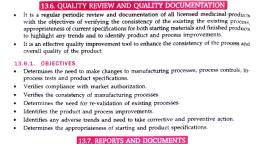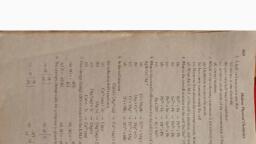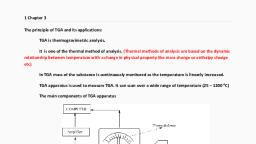Page 1 :
Amperometry, PRINCIPLE, The diffusion current at an appropriate, applied voltage is measured as a function of, the volume of the titrating solution., The end point is the intersection of two lines giving the, change of current before and after the equivalence point., • Based on principle of polarography , with the exception that, the voltage is maintained constant during the titrations., • Diffusion current is measured., • Both electro reducible and electro non reducible analytes, can be determined
Page 2 :
• Amperometric titration refers to, a class of titrationsin which the, equivalence point is, determined through measurement of, the electric current produced by the, titration reaction. It is a form, of quantitative analysis ., • Otherwise called as Polarographic, or polarometric titrations.
Page 3 :
Mainly 4 Types of titrations carried out in, amperometry , which are, 1. Reducible Sample Vs Non reducible reagents, eg: Pb2+ Vs SO4 22. Non Reducible sample Vs Reducible Reagents, eg : Cl - Vs Ag +, 3. Reducible sample Vs Reducible Reagent, eg: Pb2 + Vs Cr2O724. Non reducible samples Vs Non reducible, reagents with reducible indicators
Page 4 :
1. Reducible sample Vs Non reducible reagent, when amperometry is operated at -0.8 volt, Pb2+ is reducible, SO4 2- is non reducible, so during titration Pb2+ will present in the sample, solution current flow will occur, because it will reduce to Pb0, Pb2+ + 2e- → Pb0 (sample), At end point all Pb2+ will be, converted to Pb0, so no current flow will be there.
Page 5 :
2. Non reducible sample Vs Reducible reagents, Cl ions are non reducible so no current flow will, occur. Then on addition of Ag+ ions all Cl ion will, converted to AgCl , then on addition of extra drop of, Ag+ ions current flow take place because Ag + ions, will reduced in the form of Ag., Ag + + e- →Ag (sample), Ag + ions will take one electron, from cathode and get reduced, to Ag solid and current flow, will start and increase.
Page 6 :
3. Reducible sample Vs reducible reagents, because of presence of Pb2+ current flow takes place, At the end point All Pb2+ will converted to Pb after that an, extra drop of Cr2O7 2- , it will reduced again and current, flow will start and increase. So we will get a V shaped, graph, Pb 2+ + 2 e- →→ Pb 0 (sample), Cr2O72- + 14 H+ + 6 e- → Cr 3+ +7H2O
Page 7 :
4. Non reducible sample Vs Non reducible reagent, Al salts Vs NaF , (Fe3+ is the indicator) Both are non, reducible so no current flow will be there at the end point, and after that indicator will react with the reagent. The, indicator is reducible so it will convert from Fe3+ to Fe 2+, Ferric will be converted to ferrous, and current flow will be there, and that will be measured.
Page 8 :
• Instrumentations, Dropping mercury electrode acts as cathode and it is, , , , , , , , , negatively charged, Capillary diameter(bore size)is 20 – 50 µm, Droplet timings 2-12 sec/drop , so 5-30 drops/minute, Potential range from +0.4 to -1.8 v, Advantage: always new surface (cathode), Disadvantage: capillary may block due to dust particles, or it may break, And only applicable to 0.4 to -1.8 v range, Mercury pool: surface area is very high, act as anode, and is positively charged.
Page 10 :
Methodology, Potential will be selected and fixed according to the, analyte, For eg if we are titrating Pb2+ and SO42- Then potential, will be – 0.8, Add supporting electrolyte (for eg KCl) will form double, layer around the cathode, Take sample solution, and due to presence of some impurities and supporting, electrolyte current flow will be there and is known as, residual current, from burette will add the titrant (reagent) and it will react, with our sample and product will be forming and at the, end point current flow will either increase , decrease , or, may constant, Current flow is measured in mA(milli ampere), Concentration up to 10 -4 molar can be determined
























































